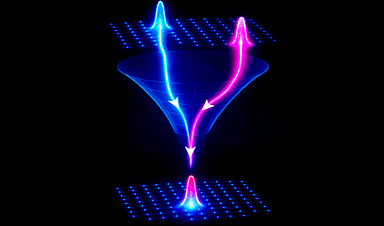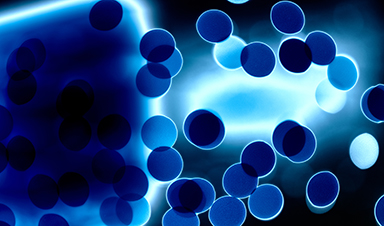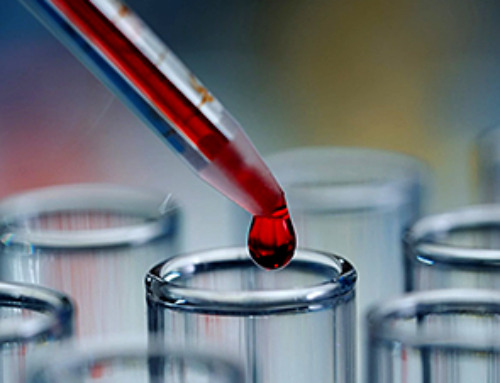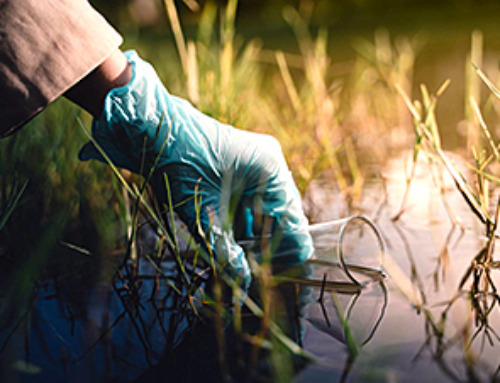| You may not always think about it when you do your laundry or flush the toilet; but whatever you eat, wear or apply on your skin ends up in wastewater and eventually reaches the environment. The use of nanoparticles in consumer products like textiles, foods and personal care products is increasing. | |
| What is so special about nanoparticles, is their tiny size: One nanometer is one billionth of a meter. The small size gives nanoparticles unique and novel properties compared to their bigger counterparts and may for example reach locations that bigger particles cannot reach. | |
| Further, pristine nanoparticles behave differently from nanoparticles in the environment. In the environment, nanoparticles are transformed by interacting and forming aggregates with other particles, elements or solids, and thereby obtain other physicochemical properties. | |
| The transformation of these tiny particles in wastewater treatment processes and their effect on freshwater and marine organisms, have largely been unknown. | |
Increased mortality of marine crustaceans |
|
| In a study (“Ecotoxicological Effects of Transformed Silver and Titanium Dioxide Nanoparticles in the Effluent from a Lab-Scale Wastewater Treatment System”) conducted at the Norwegian Institute for Water Research (NIVA), Anastasia Georgantzopoulou and colleagues from NIVA and SINTEF investigated how silver and titanium dioxide nanoparticles behave in wastewater treatment plants, and how marine and freshwater organisms are affected by them. |
| The researchers made a laboratory-scale wastewater treatment plant, using sludge from a wastewater treatment plant in Norway. They added environmentally relevant concentrations of silver (Ag) and titanium dioxide (TiO2) nanoparticles over a 5-week period and used the treated wastewater to assess the effects of transformed nanoparticles on freshwater and marine organisms, as well as on gill cells from rainbow trout. | |
| The experiment demonstrated contrasting effects on the two crustacean species. For the marine copepod (Tisbe battagliai), mortality increased by 20-45%, whereas exposure to ttreated wastewater did not have any adverse effects on the freshwater crustacean (Daphnia magna). | |
| “These differences are probably due, at least partly, to the two species’ different feeding habits, in combination with the fact that the nanoparticles showed a strong association to solids present in the wastewater”, Georgantzopoulou says….. |
Image Credit: NIVA
News This Week
Researchers propose five key questions for effective adoption of AI in clinical practice
While Artificial Intelligence (AI) can be a powerful tool that physicians can use to help diagnose their patients and has great potential to improve accuracy, efficiency and patient safety, it has its drawbacks. It [...]
Advancements and clinical translation of intelligent nanodrugs for breast cancer treatment
A comprehensive review in "Biofunct. Mater." meticulously details the most recent advancements and clinical translation of intelligent nanodrugs for breast cancer treatment. This paper presents an exhaustive overview of subtype-specific nanostrategies, the clinical benefits [...]
It’s Not “All in Your Head”: Scientists Develop Revolutionary Blood Test for Chronic Fatigue Syndrome
A 96% accurate blood test for ME/CFS could transform diagnosis and pave the way for future long COVID detection. Researchers from the University of East Anglia and Oxford Biodynamics have created a highly accurate [...]
How Far Can the Body Go? Scientists Find the Ultimate Limit of Human Endurance
Even the most elite endurance athletes can’t outrun biology. A new study finds that humans hit a metabolic ceiling at about 2.5 times their resting energy burn. When ultra-runners take on races that last [...]
World’s Rivers “Overdosing” on Human Antibiotics, Study Finds
Researchers estimate that approximately 8,500 tons of antibiotics enter river systems each year after passing through the human body and wastewater treatment processes. Rivers spanning millions of kilometers across the globe are contaminated with [...]
Yale Scientists Solve a Century-Old Brain Wave Mystery
Yale scientists traced gamma brain waves to thalamus-cortex interactions. The discovery could reveal how brain rhythms shape perception and disease. For more than a century, scientists have observed rhythmic waves of synchronized neuronal activity [...]
Can introducing peanuts early prevent allergies? Real-world data confirms it helps
New evidence from a large U.S. primary care network shows that early peanut introduction, endorsed in 2015 and 2017 guidelines, was followed by a marked decline in clinician-diagnosed peanut and overall food allergies among [...]
Nanoparticle blueprints reveal path to smarter medicines
Lipid nanoparticles (LNPs) are the delivery vehicles of modern medicine, carrying cancer drugs, gene therapies and vaccines into cells. Until recently, many scientists assumed that all LNPs followed more or less the same blueprint, [...]
How nanomedicine and AI are teaming up to tackle neurodegenerative diseases
When I first realized the scale of the challenge posed by neurodegenerative diseases, such as Alzheimer's, Parkinson's disease and amyotrophic lateral sclerosis (ALS), I felt simultaneously humbled and motivated. These disorders are not caused [...]
Self-Organizing Light Could Transform Computing and Communications
USC engineers have demonstrated a new kind of optical device that lets light organize its own route using the principles of thermodynamics. Instead of relying on switches or digital control, the light finds its own [...]
Groundbreaking New Way of Measuring Blood Pressure Could Save Thousands of Lives
A new method that improves the accuracy of interpreting blood pressure measurements taken at the ankle could be vital for individuals who are unable to have their blood pressure measured on the arm. A newly developed [...]
Scientist tackles key roadblock for AI in drug discovery
The drug development pipeline is a costly and lengthy process. Identifying high-quality "hit" compounds—those with high potency, selectivity, and favorable metabolic properties—at the earliest stages is important for reducing cost and accelerating the path [...]
Nanoplastics with environmental coatings can sneak past the skin’s defenses
Plastic is ubiquitous in the modern world, and it's notorious for taking a long time to completely break down in the environment - if it ever does. But even without breaking down completely, plastic [...]
Chernobyl scientists discover black fungus feeding on deadly radiation
It looks pretty sinister, but it might actually be incredibly helpful When reactor number four in Chernobyl exploded, it triggered the worst nuclear disaster in history, one which the surrounding area still has not [...]
Long COVID Is Taking A Silent Toll On Mental Health, Here’s What Experts Say
Months after recovering from COVID-19, many people continue to feel unwell. They speak of exhaustion that doesn’t fade, difficulty breathing, or an unsettling mental haze. What’s becoming increasingly clear is that recovery from the [...]
Study Delivers Cancer Drugs Directly to the Tumor Nucleus
A new peptide-based nanotube treatment sneaks chemo into drug-resistant cancer cells, providing a unique workaround to one of oncology’s toughest hurdles. CiQUS researchers have developed a novel molecular strategy that allows a chemotherapy drug to [...]





















